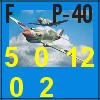Over the years I tinkered with other people's designs, coming up with house rules, modifications, and possible scenarios for already published games. There were other topics, however, that would never appeal to a main stream company because they were too esoteric - not enough interest in the subject matter to justify the cost of production. This changed with the advent of the computer, and especially the type of software available today to neophyte designers.
Topics that had never been covered before were now seeing the light of day. I suppose I thought I could never do it, but over the course of a number of years I toiled away at a disign for a piece of Canadian history that is littl known in the States, but is fascinating and holds the potential to be an interesting, challenging game. But, how do you translate your ideas - rules, charts, maps, counters, etc. - into a game?
With a personal computer, the rules, charts, and to a lesser extent the counters can now be produced at a fairly high level of quality - in fact the components look as good as some of the materials coming out of the main stream companies. For me, the biggest bug bear is how to produce a decent map on the computer!!
I use a Macintosh, and I have Illustrator CS. It's a great programme, but I'm an impatient cuss! The learning curve is steep, and my attempts so far have been somewhat ham handed and journeyman like. Making a field or a river or a road is not too difficult, but how do you make your terrain look like the terrain the battle was fought over? One method I've used is by taking a copy of an actual battle map, dropping it into the Illustrator file, then drawing over top of it - making the terrain as I go. It seems to be working for a couple of projects I have on the go now.
Truly, the biggest problem I face is how to make a properly scaled hex grid. One of the functions in Illustrator allows you to make a hex, which you can play with - resize, change the orientation on the map etc. How do you make a hex grid for an 11 x 17 map? or 22 x 34 map?
Yes, you can cut and paste until you have a grid, but there are often gaps between some of the hexes, or they don't quite fit properly! Then there is the problem of putting the hex numbers on so they look legitimate. I know that once you have things the way you like as far as the hexgrid goes, you can just make it a template and use it everytime you need a grid that size, but how do you make it look PROFESSIONAL?
If I can conquer this little problem, I think I would be able to crank out some of my ideas more quickly. I have a group that I game with which provides me with a ready group of playtesters (with almost 200 years combined gaming experience!). One of our group does the graphics for my games - Brian Moore. He was instrumental in providing the map and counter graphics for my games "For Bloody Honor" published by Firefight Games, and "Prairie Aflame" which is to be published by Khyber Pass Games. He's been great, and does a wonderful job. But I hate to continue imposing on him - or providing him with such a shoddy draft map (my own efforts) - he does have a day job and I don't want to "overuse" him.
If you have any ideas - short of taking a course on Illustrator, please let me know. I could knock off a few more games in a more expeditious fashion which I think people would like. It would also give me for of a feeling of accomplishment.
Whew! Glad I got that off my chest - hey, this is a great form of therapy!! (Whoa - that might be my next game! I think I've got a picture of a couch around here somewhere . . .)







